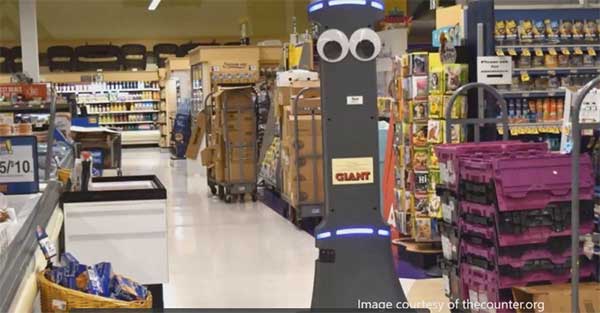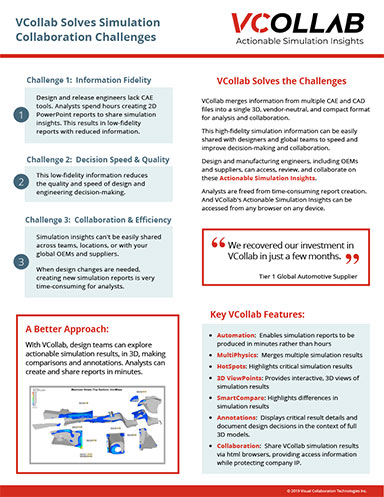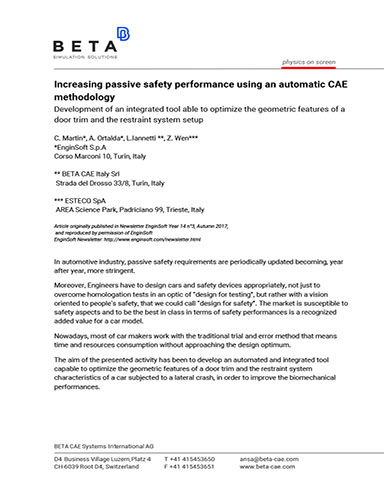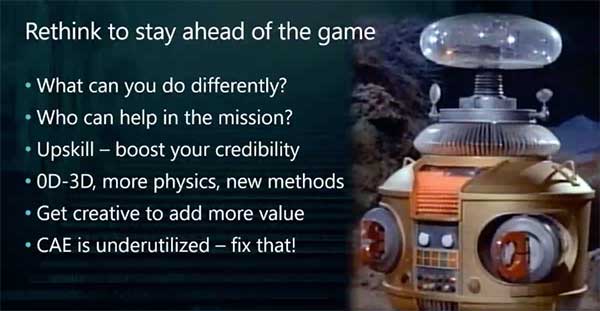CAASE20 Keynote: CAE Spread Across the Enterprise Boosts Competitiveness
Monica Schnitger of Schnitger Corp. delved into “Leveraging Simulation Across the Modern Enterprise” at the virtual CAASE20 during her keynote presentation.

Grocery store use of robots designed to gather useful data for merchants and compete with bigger online players. Image courtesy of thecounter.org/Monica Schnitger.
Latest in Computer–aided Engineering CAE
Computer–aided Engineering CAE Resources


Latest News
June 19, 2020
One of the unexpected outcomes of COVID-19 is the opportunity that it generated for the world to rethink how it does everything. That’s according to Monica Schnitger, president & principal analyst, Schnitger Corp., who delved into “Leveraging Simulation Across the Modern Enterprise” at the virtual CAASE20, June 16-18, during her keynote presentation.
“The whole world [or much of it] is working from home right now. Many of the things that working from home has exposed are the weaknesses in the systems we had in place. Most companies were not ready to be remote or to have huge numbers of employees work remotely. When we have people working, going to school and playing video games, it’s been quite a difficult slog,” she says.
The problem presented a golden opportunity to “reimagine everything. Now is a great time to rethink what we do, how we do it and why we do it,” Schnitger adds.
One item that falls under the reimagination umbrella is CAE, according to Schnitger. To date, she says it has operated as a standalone cost center; it operates far away from product teams; it is mostly used for final verification. In summary, she says, “CAE is stuck in engineering.”
Now is a great time to rethink what we do, how we do it and why we do it.
The key to retooling this process is enterprise simulation. Enterprise simulation means recognizing the following:
- CAE is a core technology, from ideation to final validation.
- CAE tools should be used by many more skill sets.
For example, concept designers can use generative design tools, while manufacturing QA uses CAE to assess/resolve issues.
Schnitger supported the enterprise simulation scenario by giving examples of complex systems, such as trains, as well as post-COVID-19 reconfigurations of office space.
For example, an architect friend of Schnitger’s is working on an app that he and his colleagues can use to combine computational fluid dynamics as a way of creating bubbles for individual humans with the air handling system as it’s currently configured with the layout.
“To try to do this at the scale that needs to be done as people come back to the office is … especially challenging because interior designers aren’t CFD people. Their concern is how to have people comfortable in this space. We’re looking at trying to find ways of combining multidisciplinary problems into a single, simple solution,” Schnitger says.
Robot-Enhanced Shopping
Schnitger provided various examples of CAE in action throughout her presentation. For one, she shared about her newfound acquaintance with Marty, which happens to be a googly-eyed robot that roams the aisles of a food chain near where she lives.
“One day I was shopping and I came around a corner and there he was,” she recalls. He’s one of a growing number of robots appearing in retail settings, according to Schnitger.
Marty’s job is simple. He doesn’t actually use the googly eyes someone glued to where his face might be. He uses sensors to find and identify spills, dropped items and bits of vegetables that fall as you’re putting them into bags in the produce department. Marty then alerts a human to come to the area where he found the garbage and clean up.
Her research on Marty led to discovery of other retail-employed robots, such as Tally, made by Simbe Robotics, a company working with investors to get robots into stores across North America. Tally roams the store reading RFID tags or taking inventory of what’s on the shelves.

“Tally gathers that data, does some processing locally, and sends the rest of it up to a cloud where algorithms are used to examine the images, for example, or scan the RFID tags and compare that data to what’s in the store’s inventory. A message then gets relayed to the store to say if something needs to be replenished,” Schnitger explains.
Tally and Marty aren’t cheap. Tally, Simbe reported in 2019, costs “less than the cheapest new car.” Marty costs in the range of $30,000 apiece. That’s “big bucks,” Schitnger says.
Why companies are willing to pay such a price?
Data from a national retail association says merchants lose about 4% of annual revenue because items are out of stock, according to Schnitger. The retail association also says that Amazon may get as much as a quarter of its revenue from consumers who tried to find a product in a physical store and failed.
“Brick and mortar stores clearly see an importance to investing in robots to keep you shopping in person.”
Robots’ Mission
Creating a Tally is not simple. Tally is a huge “system of systems.” According to Schnitger, this robot’s primary mission appears to be data gathering. But it’s about more than data gathering.
“It makes for a fun shopper experience. But ultimately the point is to keep buyer away from Amazon,” Schnitger says.
Not everyone needs a Tally or Marty for their business. But the concepts apply to all. “No matter what you do or what you make, development cycles are getting faster, and design targets keep shifting in response to competitor moves. There’s more outside pressure being put on what you do. This means you have a lot of design decisions to make.”
So, How to Respond?
One answer is to create more agile systems to respond quickly to whatever comes your way. Maybe it’s designing systems and processes that let you quickly respond to change, Schnitger suggests.
And how does one incorporate agility? Automation is one solution, Schnitger says. “Automate the boring things, the repetitive things, so you can focus on things that require your intelligence and your unique capabilities,” she adds.
The bottom line, according to Schnitger, can be boiled down to this: CAE boosts competitiveness.
“Robots, trains, office space, all the things we’ve talked about … require CAE. We also need to understand that we have opportunities to use these tools that we already have in most cases in new and creative ways. If we take CAE out of that engineering bubble, we have so many opportunities to add value,” Schnitger says.
Simulation needs to be a critical part of a project team and not just an outside resource.
“We can keep doing simulation as we always have but we add more. Simulation, when used appropriately, has benefits well beyond engineering,” Schnitger concludes.
More NAFEMS Coverage
Subscribe to our FREE magazine, FREE email newsletters or both!
Latest News
About the Author
Stephanie is the Associate Editor of Digital Engineering.
Follow DE



